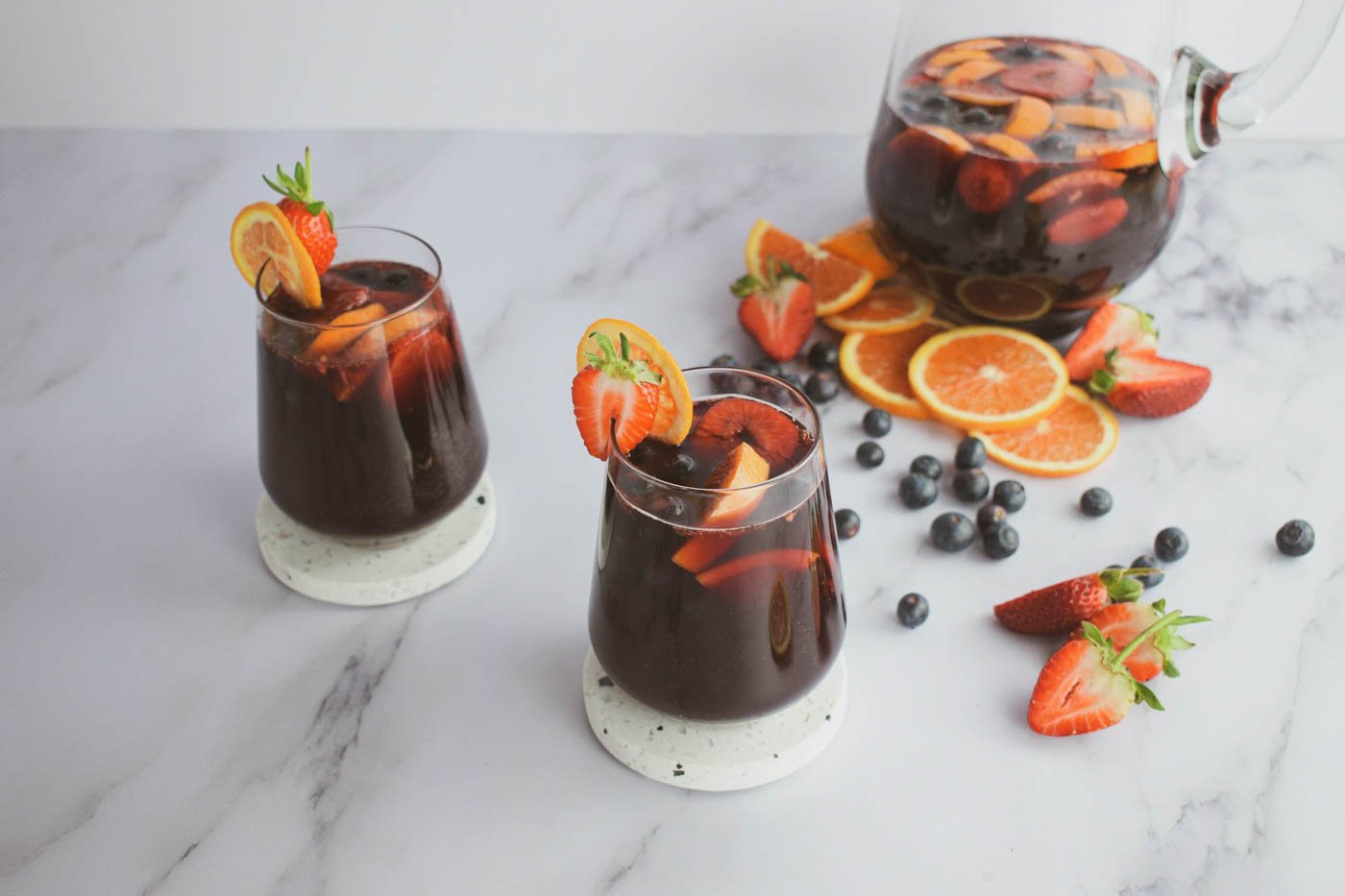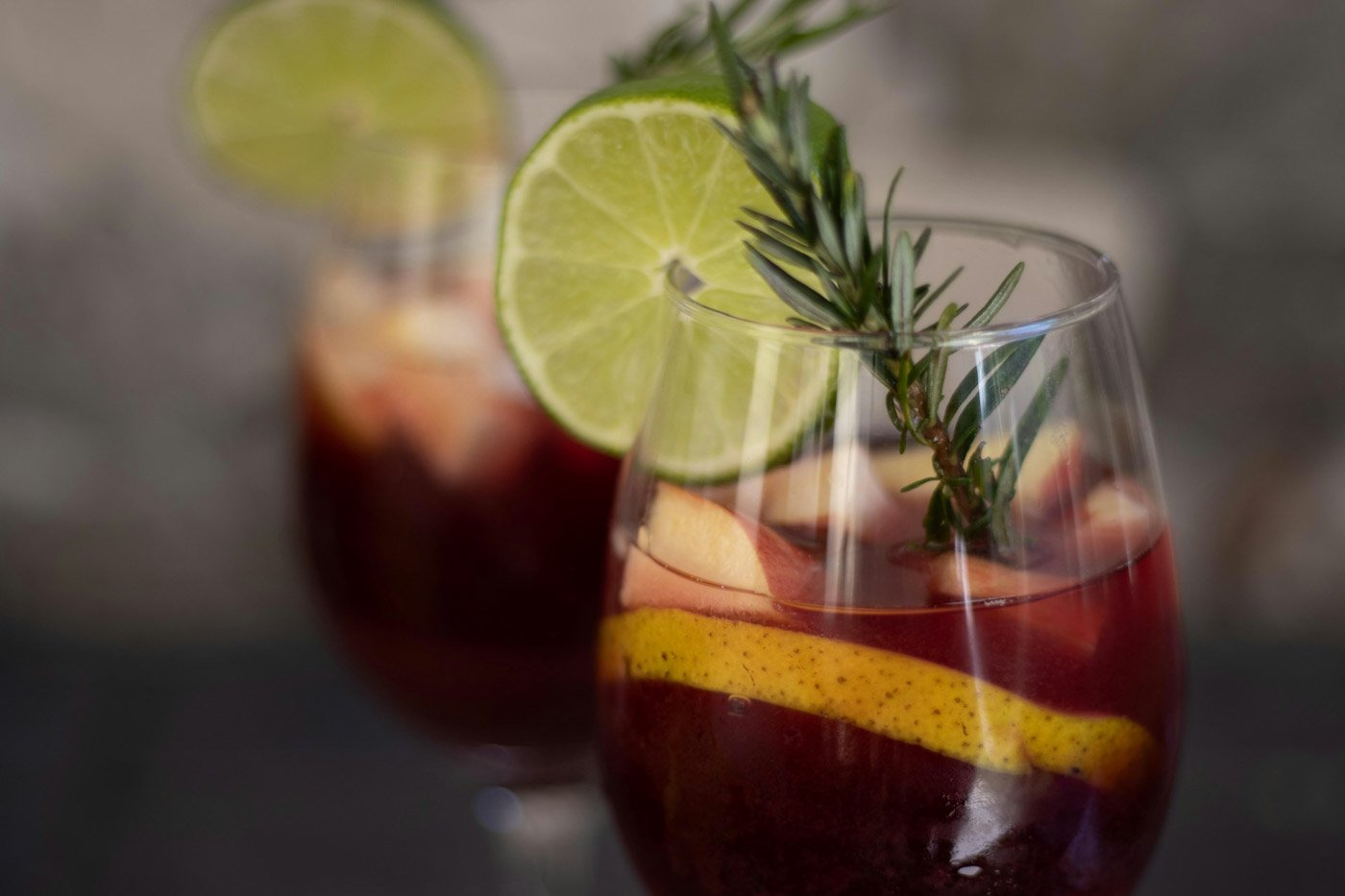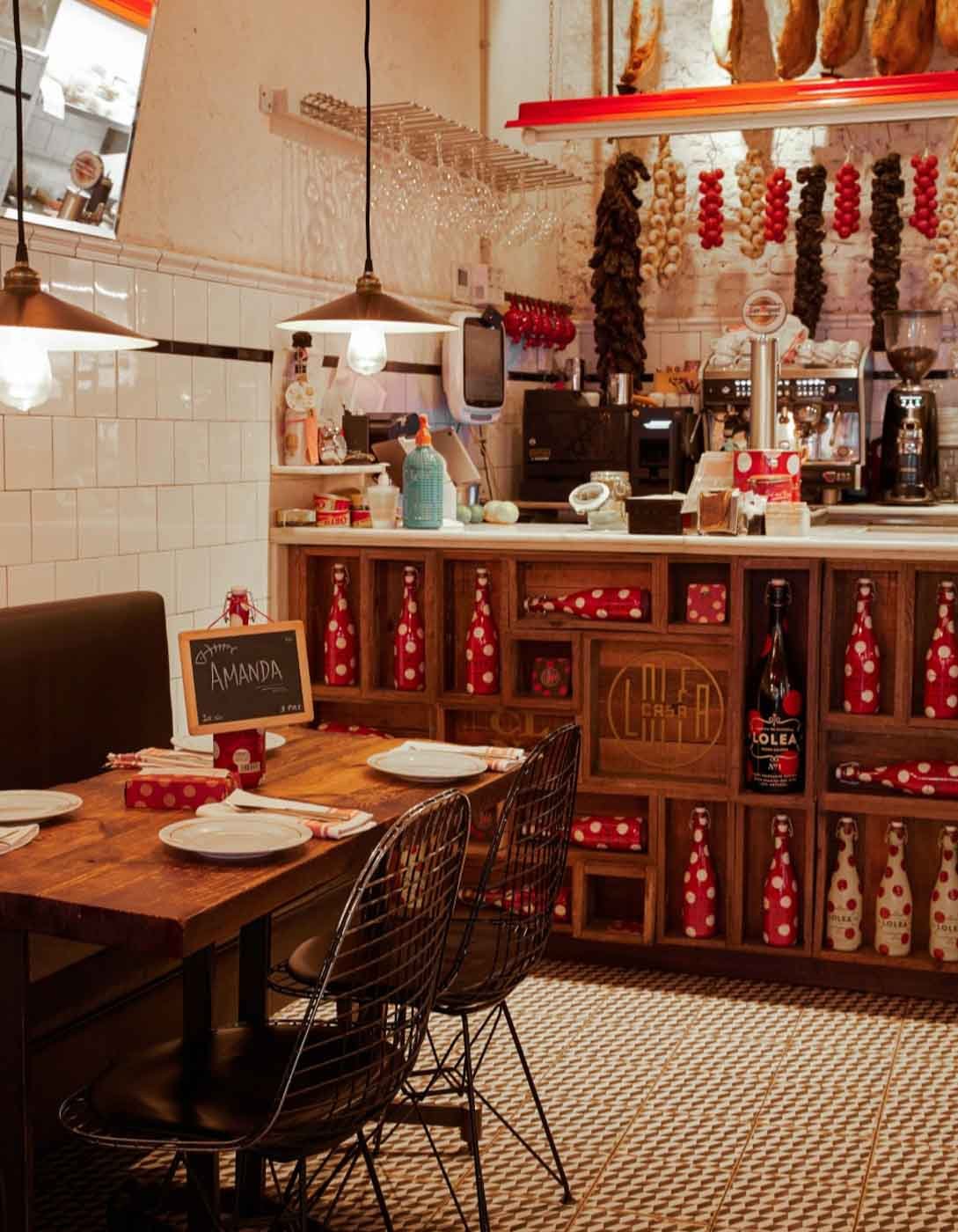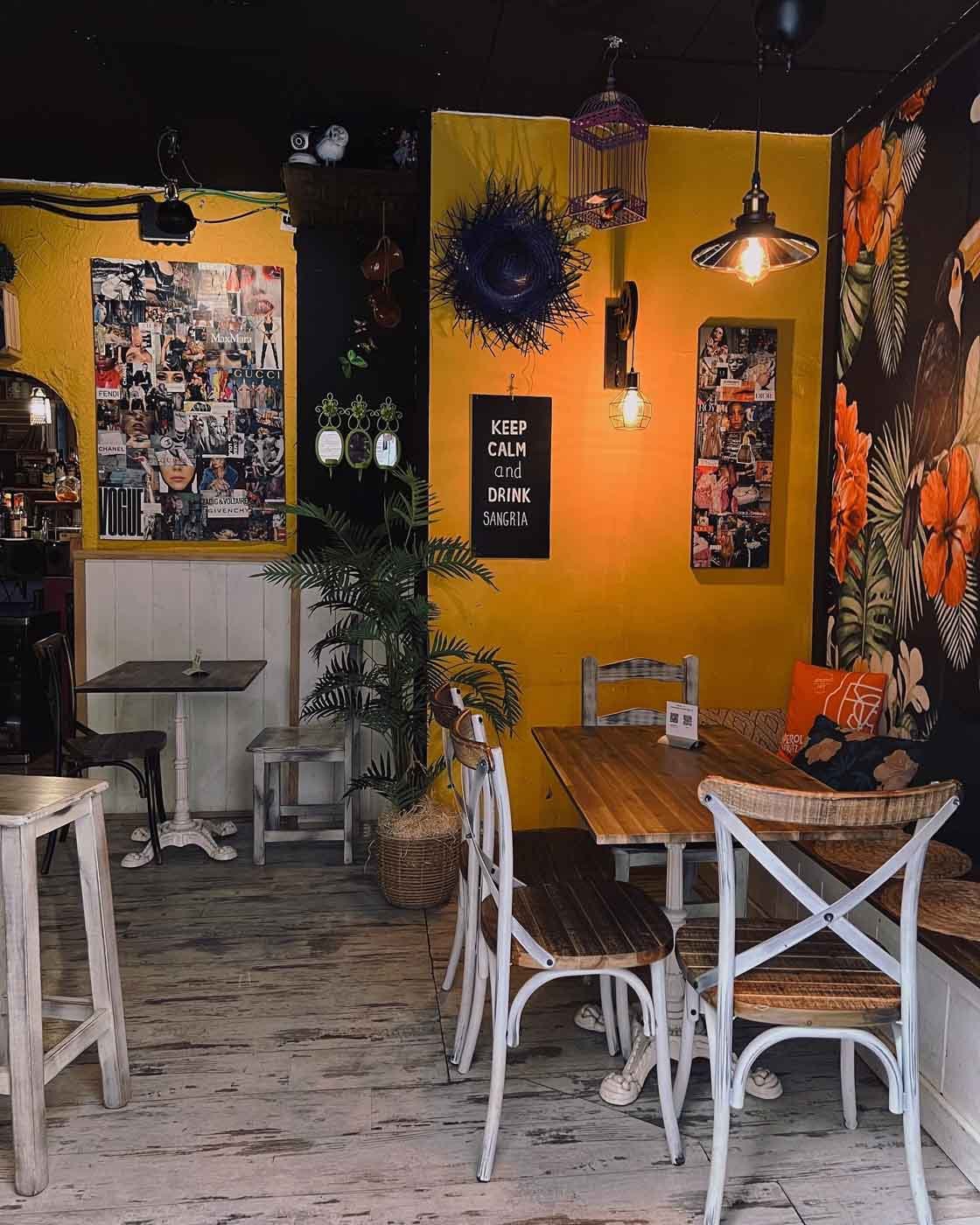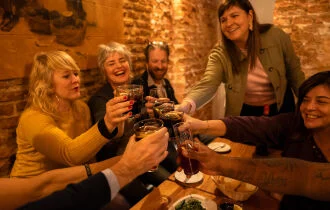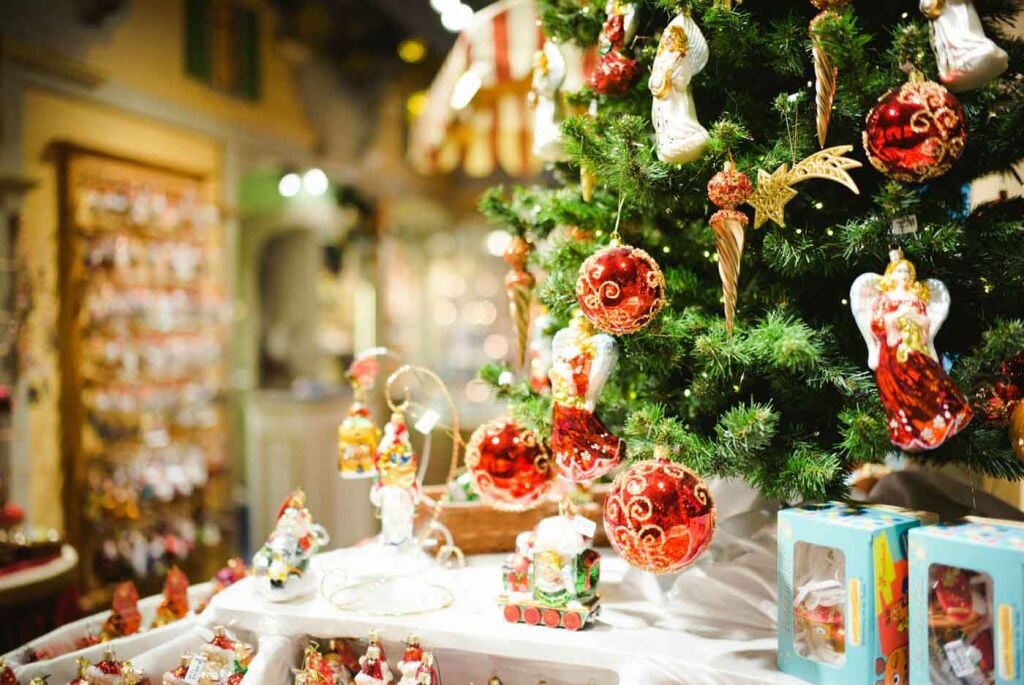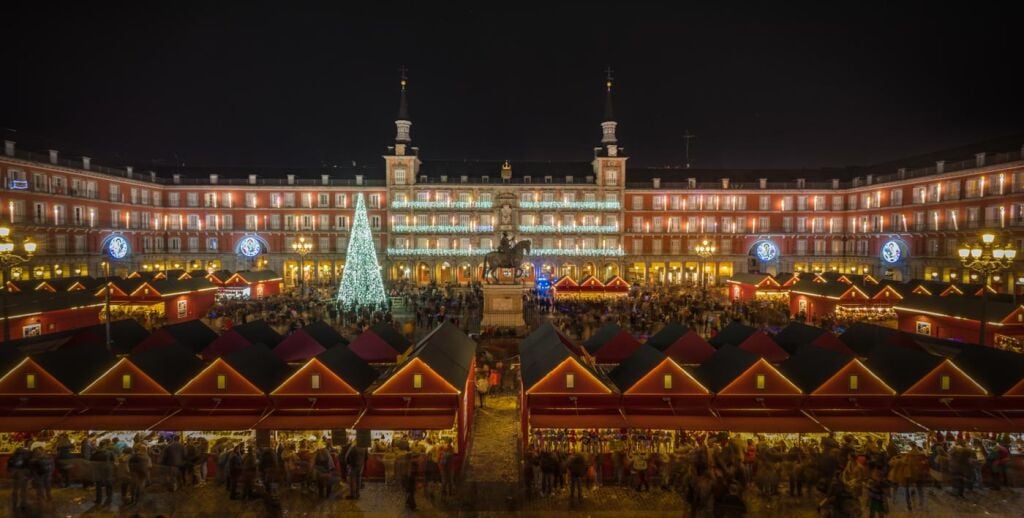Is there any experience as quintessentially Spanish as sipping on the best sangria Barcelona has to offer in the sunshine? While I spend quite a lot of time on my Barcelona food tours discussing all the city’s culinary classics, I’d be lying if I said I wasn’t equally as passionate about the sangria scene.
If you want all the insider information about where to find the best sangria in Barcelona, along with my tips for the perfect pairings and preparation techniques, this is the guide for you!
Types of Sangria
- Classic Red Sangria – The original sangria, made from a fruity, dry red wine.
- White Sangria – A spin on a typical sangria, swapping the red wine for your chosen white, such as sauvignon blanc or albariño.
- Cava Sangria – Cava sangria uses sparkling white wine rather than traditional varieties.
- Rosé Sangria – Switching from red or white wine to rosé is a less common but indisputably delicious twist on the standard recipe.
- Tinto de Verano – This lighter alternative to sangria balances red wine with an equal measure of soda water.
Key Ingredients for Authentic Sangria
Only a few ingredients are required to make sangria, though the exact recipes will vary depending on the type of sangria you choose to prepare.
In most instances, you’ll need:
- Your choice of wine, with red being the most common
- Spanish brandy or an orange liqueur like Cointreau
- Chopped fresh fruits, namely oranges, lemons, and apples
- Sugar or sweetener (optional)
- Orange juice (optional)
- Sparkling or soda water (optional)
Cultural Significance of Sangria
Sangria is believed to have been invented in Spain and Portugal in the 1800s, as poorer members of society utilized the available ingredients to create what would later become a legendary beverage. However, there’s some uncertainty surrounding the background information out there about this drink, as many believe sangria’s been around for much longer.
One of the questions I’m most frequently asked about sangria relates to whether locals really drink it. In truth, many Spaniards opt for traditional wines or beers instead of sangria, yet it remains a symbol of hospitality and celebration.
Tips for Making Authentic Sangria
- You don’t need high-end wines to make tasty sangria. For instance, an affordable rioja is commonly used for red sangria, while a classic albariño is ideal for white styles.
- It can take some trial and error to find the specific sangria recipe that suits your tastes. You’ll find that some people add spices like cinnamon for warmth or orange juice to enhance sweetness.
- Serve your sangria in a large jug with a wooden spoon for stirring. Avoid metal or plastic spoons that may alter the flavor.
Where to Find Sangria in Barcelona
Casa Lolea
Photo credit: Casa Lolea
If I had to recommend just one sangria bar and restaurant, I couldn’t choose anywhere other than Casa Lolea. This warm, eclectic spot has some creative and drool-worthy sangrias, my favorite of which is the refreshing, citrus-infused variety made from sparkling rosé.
Casa Lolea – 08003 Barcelona – Open every day from 9:00 am to 12:00 am.
Bubita
Photo credit: Bubita
It was the funky decor that first drew me into the cute and quirky Bubita, and I quickly found out it’s also where you’ll find some of the best sangria in Barcelona. The sangria menu here is huge, and I was especially taken with the intensely fruity classic offering, which had a dash of vermouth for extra sweetness.
Bubita – 08003 Barcelona – Open every Monday, Tuesday, and Sunday from 10:00 am to 11:00 pm, Wednesday and Thursday from 10:00 am to 11:30 pm, and every Friday and Saturday from 10:00 am to 12:00 am.
Bar Lobo
Bar Lobo is a super chic tapas bar, and despite its contemporary aesthetic, has mastered the art of crafting a classic sangria. The blend of tangy, tart, and saccharine notes was just what I needed to escape the Barcelona heat.
Bar Lobo – 08001 Barcelona – Open every day from 9:00 am to 1:00 am.
Sangria Pairings and Food Combinations
In all honesty, sangria is already pretty fantastic on its own, but pairing sangria with food takes this iconic beverage up a notch.
Many of the must-try foods in Barcelona go down well with a chilled glass of sangria, though certain varieties are better suited to particular dishes.
- Red sangria: Foods with savory or spicy flavors, such as patatas bravas, fideuà, and red meats.
- White sangria: Light or mild foods, including white fish, prawns, and salads.
- Cava Sangria: Fried foods like croquetas or cheeses, such as Manchego.
Sangria Tasting Experiences in Barcelona
For a more immersive experience, consider booking a sangria-making experience or class. If I could recommend one such outing, it has to be Salut Wine Studio‘s sangria workshop, which is as fun as it is delicious!
Final Thoughts: Savoring Sangria in Barcelona
Hopping from bar to bar and searching for the best sangria in Barcelona is one of my favorite things to do whenever I’m in the city. Not only is it a great way to enjoy variations on this much-loved beverage, but it also allows you to dig a little deeper into Barcelona’s storied gastronomic culture.
Sources:
Eating Europe. (n.d.). Barcelona food tours. Eating Europe. Retrieved May 10, 2025, from https://www.eatingeurope.com/barcelona/
Casa Lolea. (n.d.). Casa Lolea. Retrieved May 10, 2025, from https://casalolea.com/en/
Bubita. (n.d.). Bubita Sangria Bar. Retrieved May 10, 2025, from https://bubita.es/
Grupo Tragaluz. (n.d.). Bar Lobo – Grupo Tragaluz. Retrieved May 10, 2025, from https://grupotragaluz.com/en/restaurants/bar-lobo/
Eating Europe. (n.d.). Barcelona food guide: What & where to eat in Barcelona. Eating Europe. Retrieved May 10, 2025, from https://www.eatingeurope.com/blog/barcelona-food/
Salut Wine Studio. (n.d.). Salut Wine Studio. Retrieved May 10, 2025, from https://www.salutwinestudio.com/


